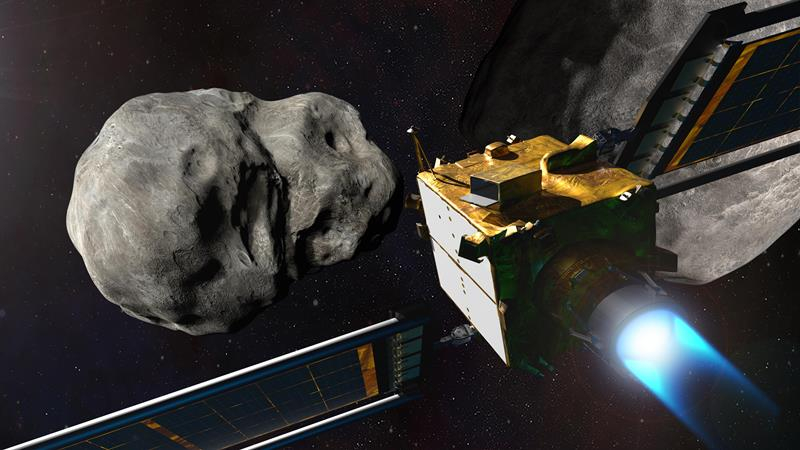In 2022, the US National Aeronautics and Space Administration (NASA) conducted the Double Asteroid Redirection Test (DART) mission, in which the spacecraft collided with the asteroid Dimorphos. The purpose of the mission was to test the possibility of changing the asteroid’s flight path to prevent a potential collision with Earth. It turned out that the results of this experiment helped scientists learn more about the nature of asteroids.

Image source: NASA/Johns Hopkins APL/Steve Gribben.
Scientists from the University of Maryland conducted a study that found that after the collision with the satellite, Dimorph actually deviated from its original evolutionary development. Scientists believe the asteroid may begin to spin chaotically in an attempt to return to gravitational equilibrium with the larger asteroid it orbits, Dydimos.
«For the most part, our initial predictions about how DART would change the movement of Didymus and its moon through space turned out to be correct. But there are some unexpected discoveries that help better understand how asteroids and other small bodies form and evolve over time,” said Derek Richardson, professor of astronomy at the University of Maryland and leader of the DART research team.
The results of the work done by researchers led by Richardson were recently published in the Planetary Science Journal. It details observations of the asteroid after its collision with the satellite, and also describes the possible results that will be achieved in future studies of asteroids. One of the biggest surprises was how much the DART machine changed the shape of the Dimorph. Initially, the shape of the asteroid was flattened and resembled a hamburger, while after the collision it became more elongated and shaped like a soccer ball.
The researchers said they expected Dimorph’s shape to be elongated because it fits with scientists’ understanding of how the asteroid formed and interacted with the larger Didymus. However, the change in Dimorph’s shape after the collision with the DART satellite surprised scientists and led them to believe that “there is something more complex at work here.” Moreover, the change in shape likely led to the fact that the interaction between the two asteroids itself became different.
Richardson noted that although the DART strike only hit Dimorph, the asteroid is gravitationally bound to Didymus. Debris scattered by the spacecraft impact also plays a role in unbalancing the two-asteroid system as Dimorph’s orbit around Didymos becomes smaller. At the same time, the shape of Didymos did not change, which may indicate a denser and more rigid structure of the larger asteroid.

Photo of asteroid Dimorph two seconds before DART collided with its surface on September 26, 2022
Scientists believe Dimorph’s change in shape has important implications for future exploration missions, including the European Space Agency’s (ESA) Hera mission to the two-asteroid system, due to begin in October this year. “Originally, Dimorph’s structure was probably not so strong and one of its sides was always directed towards Didymus, just as one side of the Earth’s moon was always directed towards our planet. Now it’s off axis, which means it can swing back and forth in its orientation. The dimorph can also ‘flip,’ meaning we could make it spin erratically and unpredictably,” Richardson explained.
Now researchers are waiting for the debris ejected from the collision to leave the system of two asteroids to find out whether Dimorph will continue to “tumble” in outer space and whether it will be able to restore its previous stable flight path. “One of the main questions for us now is to determine whether Dimorph is stable enough for a spacecraft to land on its surface and install additional research equipment. It may take a hundred years to see noticeable changes in the system, but only a few years have passed since our impact. “Counting how long it takes Dimorph to regain its stability will help us learn important things about its internal structure, which in turn will inform future attempts to change the trajectory of dangerous asteroids,” says Richardson.
The Hera mission, which ESA will launch this fall, will be the next step in studying the impact of the DART satellite colliding with an asteroid. As part of this mission, the spacecraft should reach the system of two asteroids Didymus and Dimorph by the end of 2026. It is expected that this research will assess the internal structure of asteroids, as well as more in-depth study of the results of the DART mission.
«DART has given us insight into complex gravitational physics that cannot be studied in the laboratory, and all this research is helping us learn more to protect the Earth in the event of a real threat. There is a non-zero chance that an asteroid or comet will come close and put the planet in danger. Now we have an additional line of defense against these types of external threats,” says Richardson.